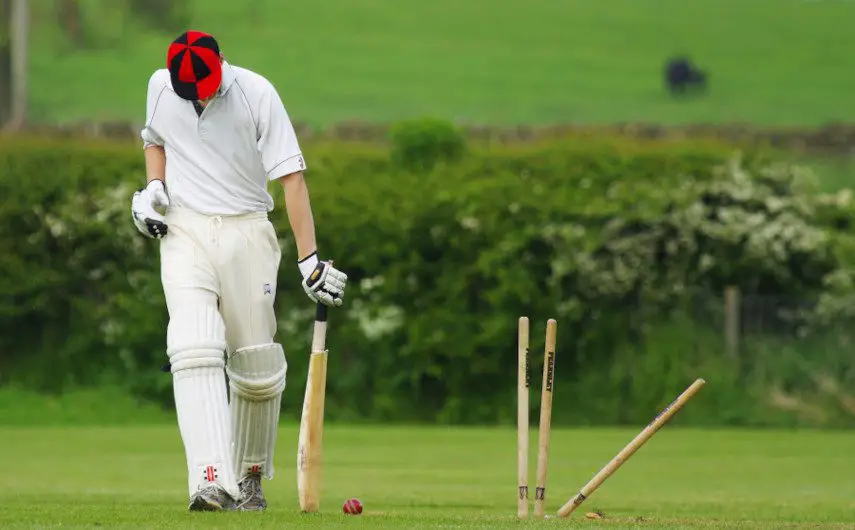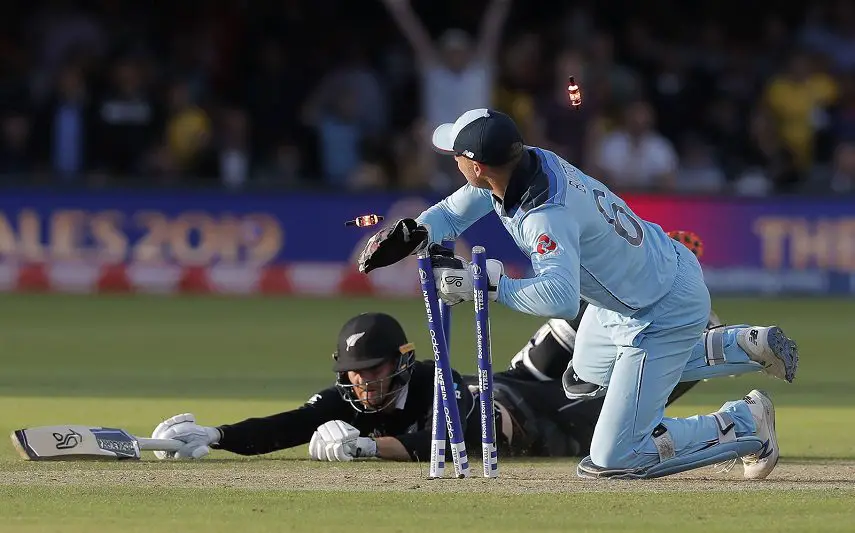Table of Contents
It’s one of the rulings that makes cricket such a unique game and, in this article, I’m going to explain all about the follow-on.
What is the Follow-On in Cricket?
The follow-on can only occur in a match where each team has two innings per side so we’re looking at test and first class cricket. If the team batting second doesn’t get within a certain amount of runs of their opponents’ first innings total, they can be asked by the opposition to follow-on and play their second innings straight away.
Follow-On Rules
What is the Minimum Lead for a Follow-On?
In test cricket, the minimum first innings lead required to enforce the follow on is 200 runs. As an example, if Australia made 436 on first innings and Sri Lanka made 200 all out in reply, Australia would have the option of enforcing the follow on and asking Sri Lanka to bat again.
In first class matches lasting four days or less, the minimum first innings lead needed for the follow on is reduced to 150.

How to Enforce the Follow-On
The follow on is optional and teams do not have to enforce it. The decision is ultimately down to the captain although he or she will almost certainly consult with their fellow players and the coach.
Once the decision is made, the skipper will notify the opposing captain and the match umpires. Having enforced the follow on, that decision cannot be reversed.
Pros and Cons of the Follow On
Advantages
The follow on is a good option for a team if the game appears to be heading for a draw. If there is not enough time for a side to bat again before dismissing the opposition, they should certainly enforce the follow on.
It’s also felt that the follow on increases pressure on the team batting. If they have been dismissed very quickly, e.g. inside a day’s play, those batters do not have time to mentally readjust while fielding. By asking them to take their second innings immediately, the pressure is instantly on.
The weather forecast could also have an influence on a captain’s decision. Although they are not completely reliable, if the forecast is for rain later on in the match, it would make sense to ask for a follow on so that the game has a chance of finishing quickly.
Disadvantages
A more recent trend has seen a number of teams choose not to enforce the follow on. In a high scoring game, this could simply be because the bowlers are tired and would not be as effective if they were asked to go straight out and bowl again.
Teams are also reluctant to bat last on the final day of a game. This is when the pitch is most likely to take spin or provide uneven bounce. If a captain enforces the follow on and they have to bat last on a wearing surface, they could be at a significant disadvantage.
In general, the state of the game will usually determine whether or not a captain will enforce the follow on. If time is running out then it is a good solution to try and force a result in the match. If there is more time left, the weather forecast is good and the skipper wants to avoid batting last, then it may be more logical to not enforce the follow on.
Examples of the Follow On
Ashes Series 1981: Australia v England
Perhaps the most famous example of the follow on being enforced came during the Ashes Series of 1981. It was a fairly regulation decision by Australia’s skipper Kim Hughes during the third test against England at Headingley.
Mike Brearley’s England were 227 runs short of Australia’s first innings total of 401/9 declared and Hughes asked them to follow on. Having slumped to 135/7 in that second innings, England were ranked as 500/1 by the bookies before 149 from Ian Botham and eight wickets for Bob Willis sealed an incredible victory.

South Africa v Australia 1950
An earlier instance where the follow on was not enforced left the captain rueing his decision. Back in 1950, South Africa were hosting Australia in a four-day test match at Kingsmead. South Africa scored 311 on their first innings and bowled their opponents out for just 75.
South African skipper Dudley Nourse did not enforce the follow on and his team were dismissed for 99 in their second innings, Chasing 336 to win, Australia got home by five wickets thanks to an unbeaten 151 from Neil Harvey.
These are rare occurrences and, in most cases, the team with the big deficit on first innings will tend to lose, irrespective of whether the follow on is enforced.
In summary, it’s not always a straightforward decision whether enforcing the follow on is the right decision. If it goes wrong, the captain in question will always appear foolish.


